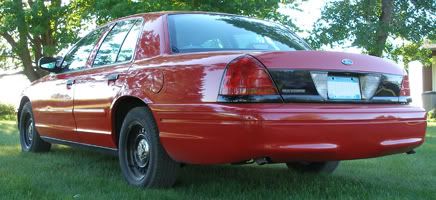Since Pirate started bashing AFB carburetors in Tom's carb-conversion thread, he's got me doing some thinking about my continued use of AFBs in the future.
The obvious downsides are of course the fact that the Carter-design metering rod system doesn't allow quite as much adjustment as may be desired, and the fact that the secondary sides lack metering rods. That on top of the fact that the AFB doesn't provide for convenient tuning of the secondary air doors means a less adjustable carburetor overall - bad for fuel economy, and it's looking like it can sometimes even be bad for meeting the actual fuel needs of even a mildly modified engine.
Another annoyance I've noticed with AFBs is the lack of replacement parts. I may be wrong, but I get the impression that with, say, a Holley, you can start with a main body, and build up the entire rest of the carb out of a catalog, from metering plates to boosters to fuel-enrichment valves to quick-change covers for secondary springs on vacuum-secondary models. I e-mailed Edelbrock a while back asking for a part number to order replacement boosters, such as if someone wants to convert a 1404 to a 1406 or vice versa (the boosters are the primary difference between the two models), and received no reply. I've more recently realized that if the stepup plungers, power pistons, fuel enrichment plungers, or whatever you want to call them get damaged or go missing, there doesn't appear to be any way to get new ones (I haven't completely exhausted all options, but a complete lack of supply options does seem so far to be the case).
I can't afford any more carburetors at present, and I'll admit that my initial purchase of AFBs was in part motivated by their lower retail price in addition to the reputation for ease of tuning for someone completely new to the world of carburetors (as I was at the time of my first purchase), but these various considerations (and probably others I'm not thinking of, such as the fact that not a lot of people know much about the things in the first place) have me wondering slightly whether I should really continue running AFB carbs in the future.
The obvious downsides are of course the fact that the Carter-design metering rod system doesn't allow quite as much adjustment as may be desired, and the fact that the secondary sides lack metering rods. That on top of the fact that the AFB doesn't provide for convenient tuning of the secondary air doors means a less adjustable carburetor overall - bad for fuel economy, and it's looking like it can sometimes even be bad for meeting the actual fuel needs of even a mildly modified engine.
Another annoyance I've noticed with AFBs is the lack of replacement parts. I may be wrong, but I get the impression that with, say, a Holley, you can start with a main body, and build up the entire rest of the carb out of a catalog, from metering plates to boosters to fuel-enrichment valves to quick-change covers for secondary springs on vacuum-secondary models. I e-mailed Edelbrock a while back asking for a part number to order replacement boosters, such as if someone wants to convert a 1404 to a 1406 or vice versa (the boosters are the primary difference between the two models), and received no reply. I've more recently realized that if the stepup plungers, power pistons, fuel enrichment plungers, or whatever you want to call them get damaged or go missing, there doesn't appear to be any way to get new ones (I haven't completely exhausted all options, but a complete lack of supply options does seem so far to be the case).
I can't afford any more carburetors at present, and I'll admit that my initial purchase of AFBs was in part motivated by their lower retail price in addition to the reputation for ease of tuning for someone completely new to the world of carburetors (as I was at the time of my first purchase), but these various considerations (and probably others I'm not thinking of, such as the fact that not a lot of people know much about the things in the first place) have me wondering slightly whether I should really continue running AFB carbs in the future.



Comment